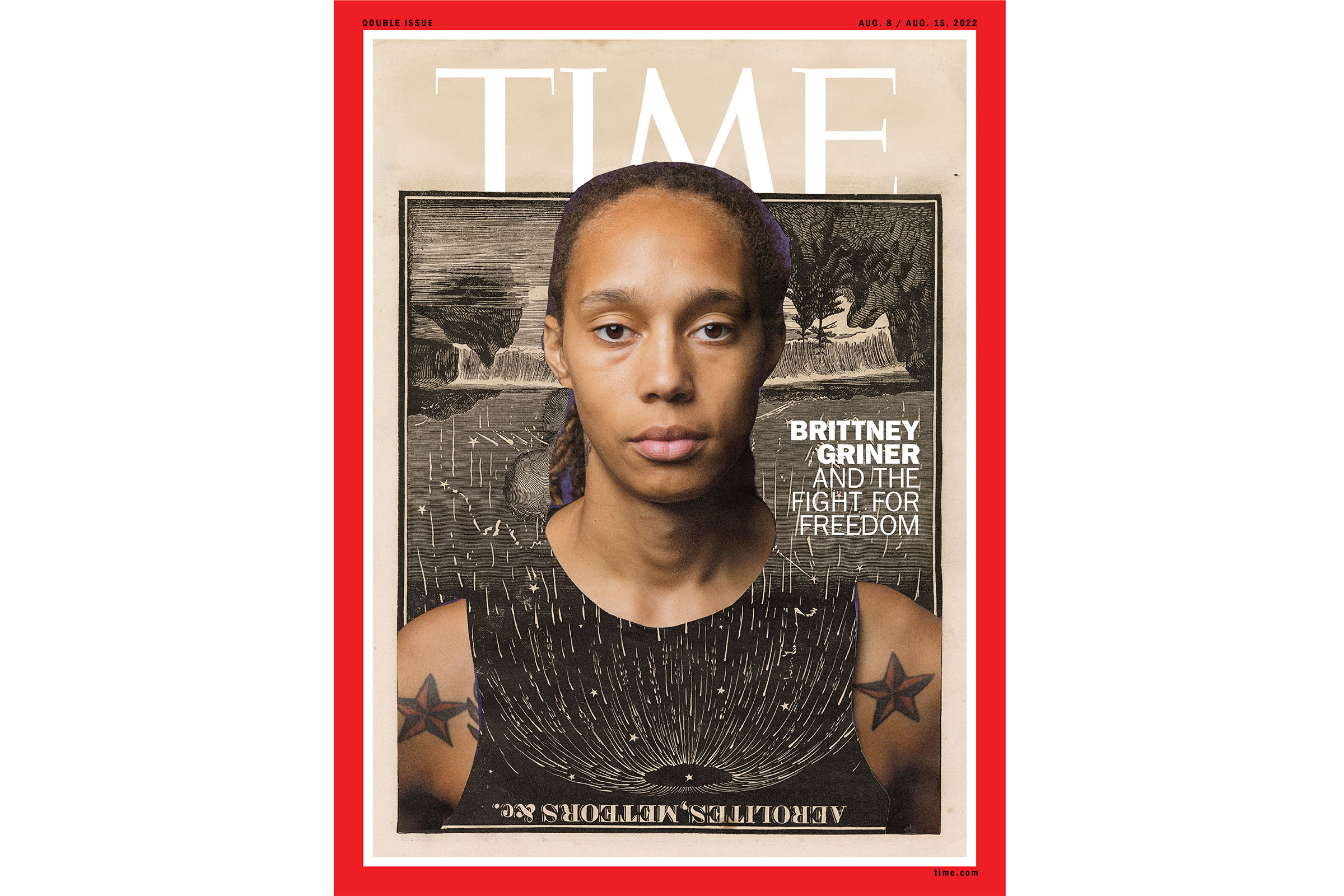
Although the photographer and multimedia artist Lorna Simpson has never met WNBA player Brittney Griner, she has no trouble imagining a vulnerability of the kind that Griner, another Black American woman, has been experiencing since being detained in Russia since February.
“In February, as Russia’s threats of invasion in Ukraine escalated, watching the airport surveillance video of Brittney Griner passing through security made my heart sink,” Simpson—whose art re-contextualizes narratives around race, gender, and identity through collages of found photos—told TIME. “One of my greatest fears as a teenager growing up in Queens, N.Y., was always imprisonment.”
Griner, a two-time Olympic gold athlete, eight-time WNBA all-star and player for the Phoenix Mercury in the WNBA and for Russia’s UMMC Ekaterinburg during the off-season, was arrested on drug charges on Feb. 17—just one week before Russia invaded Ukraine—after customs officials at the airport found vape cartridges with traces of cannabis oil in her suitcase. In the months that have followed, concerns have been raised about Griner, a prominent American athlete and an openly queer Black woman, being imprisoned in the midst of a war, in a country known for anti-gay legislation.
For the cover of this issue of the magazine, to accompany Sean Gregory’s profile of Griner and the effort to bring her home, Simpson created an image that reimagined a standard media-day portrait, by photographer Stephen Gosling, of Griner in her WNBA uniform. The collage centers Griner’s steadfast gaze, but with her uniform superseded by a celestial overlay of meteor showers—taken from a 19th century print—that extends into the background.
Read the cover story: Brittney Griner’s Fight for Freedom
The cosmos have long been a focus in Simpson’s art, a visual tool to explore the vastness of identity. “If the stars fill that space, then what body is actually there that isn’t filled with that kind of expansiveness?” she explained in a 2021 interview with Harper’s Bazaar. Using starscapes and astronomical maps, she transforms vintage pictures of Black women from Jet and Ebony into heavenly bodies that question preconceptions about identity. She used that same practice to create her cover art of Griner.
“For me, the strong impression of this image of Griner is not only what could be interpreted as the solemnity of her expression but also the symmetry of the star tattoos on her shoulders,” Simpson told TIME. The inversion of the illustration is a way of “bringing into focus how much of her life has been upended, the urgency of her release and safe return to the U.S., and the preciousness of time that is passing.”
More Must-Reads from TIME
- Cybersecurity Experts Are Sounding the Alarm on DOGE
- Meet the 2025 Women of the Year
- The Harsh Truth About Disability Inclusion
- Why Do More Young Adults Have Cancer?
- Colman Domingo Leads With Radical Love
- How to Get Better at Doing Things Alone
- Michelle Zauner Stares Down the Darkness
Write to Cady Lang at cady.lang@timemagazine.com